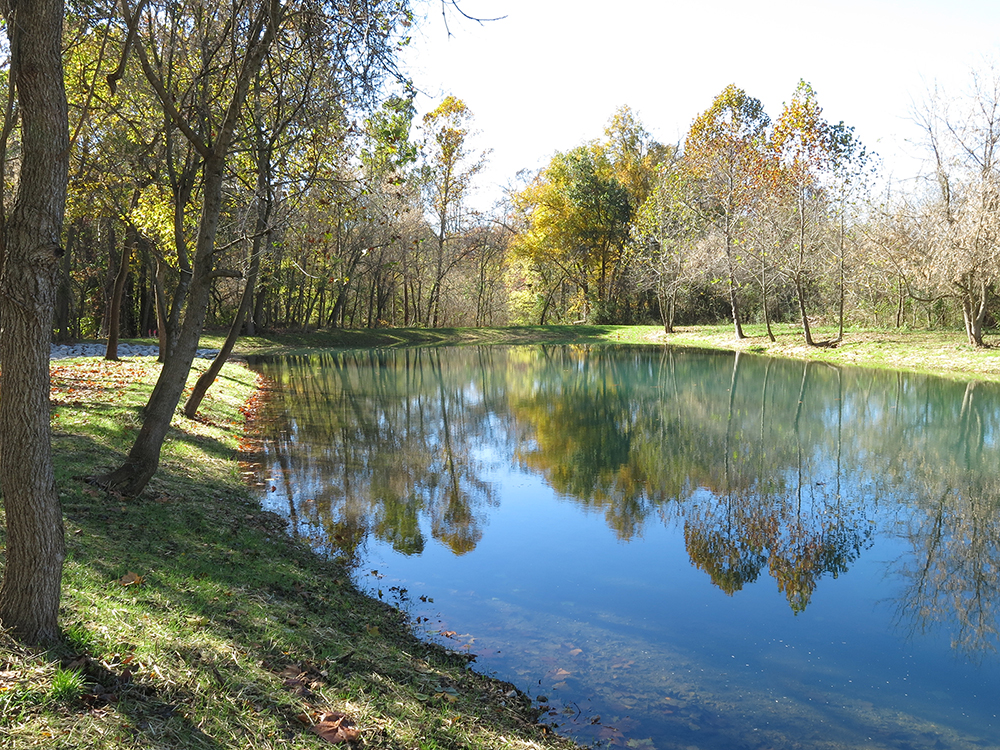 On March 10, 1862, four Confederate soldiers who had been deserted by their main company after the March 7 Battle of Pea Ridge were making their way home to the present-day Gentry and Siloam Springs areas. Knowing it was unsafe to travel during daylight, the soldiers, John Sager, Samuel Sager, Ned Lovel, and Haywood Pleasant Thomason, took cover in a bluff above Pipe Springs. Shortly, however, they were attacked by members of the Cherokee Home Guard, commonly known as “Pin” Indians. Of the four Confederates, only Samuel Sager managed to escape with his life. Sager made it to his father’s home near present-day Siloam Springs. After relating the sorrowful news, four young women, Lavinia Gunter, Ann Gunter, Mary Culbertson and Sarah Culbertson, hitched up a wagon and set out to retrieve the three Confederate dead, since travel for men was too dangerous. The women managed to load the soldiers into the wagon and brought them home for burial in Hico Cemetery in present day Siloam Springs.
On March 10, 1862, four Confederate soldiers who had been deserted by their main company after the March 7 Battle of Pea Ridge were making their way home to the present-day Gentry and Siloam Springs areas. Knowing it was unsafe to travel during daylight, the soldiers, John Sager, Samuel Sager, Ned Lovel, and Haywood Pleasant Thomason, took cover in a bluff above Pipe Springs. Shortly, however, they were attacked by members of the Cherokee Home Guard, commonly known as “Pin” Indians. Of the four Confederates, only Samuel Sager managed to escape with his life. Sager made it to his father’s home near present-day Siloam Springs. After relating the sorrowful news, four young women, Lavinia Gunter, Ann Gunter, Mary Culbertson and Sarah Culbertson, hitched up a wagon and set out to retrieve the three Confederate dead, since travel for men was too dangerous. The women managed to load the soldiers into the wagon and brought them home for burial in Hico Cemetery in present day Siloam Springs.
Today, Pipe Springs is part of the Flint Creek Nature Area just south of Gentry. Turn west on Dawn Hill East at Sleepy Hollow Store off Arkansas Highway 59. The Nature Center is less than ¼ mile on the south side of the road.
By Don Montgomery
Former park historian
The Battle of Prairie Grove was the last time two armies of almost equal strength faced each other for control of northwest Arkansas and Missouri. When the Confederate Army of the Trans-Mississippi withdrew from the bloody ground on the night of December 7th, it seemed clear that Missouri and northwest Arkansas would remain under Federal protection. Cavalry raids and guerrilla warfare continued to plague the region until the war finally ended in 1865.
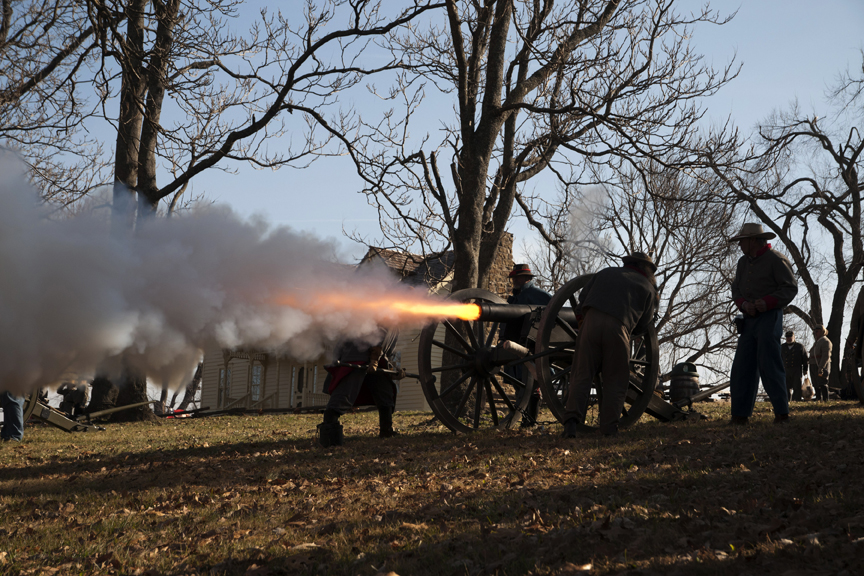 Major General Thomas C. Hindman’s Confederate Army of the Trans-Mississippi attacked the Union Army of the Frontier under the command of Brigadier Generals James G. Blunt and Francis J. Herron on December 7, 1862. There were about 12,000 in the Southern Army from Arkansas, Missouri, Texas, as well as the Cherokee and Creek Nations. The Federal Army had about 10,000 soldiers from Arkansas, the Cherokee and Creek Nations, Illinois, Indiana, Iowa, Kansas, Missouri, and Wisconsin. The battle took place near the Illinois River on a ridge and valley called “Prairie Grove,” named after the small log church which sat upon the high ground.
Major General Thomas C. Hindman’s Confederate Army of the Trans-Mississippi attacked the Union Army of the Frontier under the command of Brigadier Generals James G. Blunt and Francis J. Herron on December 7, 1862. There were about 12,000 in the Southern Army from Arkansas, Missouri, Texas, as well as the Cherokee and Creek Nations. The Federal Army had about 10,000 soldiers from Arkansas, the Cherokee and Creek Nations, Illinois, Indiana, Iowa, Kansas, Missouri, and Wisconsin. The battle took place near the Illinois River on a ridge and valley called “Prairie Grove,” named after the small log church which sat upon the high ground.
The battle began at dawn with the defeat of Union cavalry by Confederate horse soldiers a few miles south of the ridge. The Federals retreated towards Fayetteville with the Southern cavalry in pursuit. The panicked Union soldiers stopped running when General Herron shot one soldier from his horse. The Confederate cavalry skirmished with Herron’s troops before falling back to the Prairie Grove ridge where General Hindman’s Confederate infantry and artillery waited in the woods in a line of battle.
After crossing the Illinois River under artillery fire, Herron’s Union artillery exchanged fire with the Confederate cannons near the home of Archibald Borden. The superior range, accuracy, and number of Union guns silenced the Southern batteries, allowing the remainder of the Union army to position themselves for an attack of the ridge. Before charging the high ground, the Federals pounded the ridge with cannon fire for almost two hours.
The Twentieth Wisconsin and Nineteenth Iowa Infantry regiments crossed the open corn and wheat fields before surging forward up the slope, capturing the Confederate cannons of Blocher’s Arkansas Battery. They continued to advance until suddenly; the woods erupted with small arms and cannon fire. The Confederates surrounded the two Union regiments on three sides and quickly forced them to retreat to the safety of the Federal guns in the valley. The Confederates under General James F. Fagan counterattacked down the slope onto the open ground where they were met with case shot and canister fire from the Union artillery and hastily returned to the cover of the wooded ridge.
Again the Union Army attacked sending the Thirty-seventh Illinois and Twenty-sixth Indiana Infantry regiments up the hill into the Borden apple orchard. Lieutenant Colonel John Charles Black of the Thirty-seventh Illinois led the way with his right arm in a sling, caused from a wound received nine months earlier at Pea Ridge, and wearing a red cape. Outnumbered, the Federals fell back to a fence line in the valley where they stopped a second Confederate counterattack using the Colt revolving rifles carried by the men of companies A and K in the Thirty-seventh Illinois Infantry.
The Confederates began massing their troops on the right flank of General Herron’s blue clad troops in order to overwhelm the outnumbered Federals. Before they could attack, two cannon shots rang out from the northwest, announcing the arrival of General James G. Blunt’s Kansas Division who quickly deployed and assaulted the Confederate left flank. Blunt’s Union soldiers were at Cane Hill that morning expecting to be attacked by the Confederate Army. When they heard the roar of battle at Prairie Grove, they marched to the battlefield arriving in time to save General Herron’s command.
The Southern Army responded by stopping the Union advance, forcing the boys in blue to fall back to their cannon line in the valley. Just before sunset, the Confederate Missouri Infantry under the command of General Mosby M. Parsons charged out into the Morton hayfield in hopes of overwhelming their foe. The intense fire from all forty-four cannons in the Union Army tore into the Southern ranks. The gray clad soldiers fell back to the cover of the trees as darkness settled over the field.
The fighting on the western end of the ridge raged near the Morton House where four families huddled in the cellar for shelter from the storm of bullets and cannonballs above. Nightfall brought an end to the savage fighting with neither side gaining an advantage. The Confederate Army retreated during the night by wrapping blankets around the wheels of their cannons. They were short of ammunition and many of the men had not eaten for some time. The Union troops spent the night on the field with no campfires and only a few blankets, coats, and tents despite frigid temperatures.
The two armies lost a total of 2,700 men who were wounded, killed, or missing in action. The battle was a tactical draw, but a strategic Union victory as the Federals would maintain control of Missouri and northwest Arkansas for the remainder of the war. The remainder of the conflict in the region descended to guerrilla warfare with bushwhackers (Southern supporters) and jayhawkers (Union supporters) destroying the countryside and forcing many families to become refugees. It would take many years for the people of northwest Arkansas to recover from the effects of the Civil War.
Take a look at the Prairie Grove Battlefield State Park website for more information.
Rhea’s Mill, five miles northwest of Prairie Grove, takes its name from William Rhea, a prosperous merchant and miller.
During the Civil War, William Rhea’s mill was taken over by both Confederate and Union troops–control of the mill changed hands seven times during the war. Rhea was decidedly pro-Confederate: he charged Confederates two and a half cents per pound for flour, while Union soldiers were charged twice that.
Rhea kept a careful record of the valuation of goods and services used by the Union soldiers:
Detachment 1st and 2d Indian Regiment — 200 men — under command of Lieut. Robb — camped on my premises, used the following:
5000 lb Flour @ 5 250.00
Corn meal, 2000 lb @ 2 40.00
Pork Killed, 200 lb @ 5 100.00
Rails for fuel, 2 cords 7.00
2 Turkeys 2.00
1 Man’s Saddle 25.00
Burning house 250.00
674.00
Team to haul to Cincinnati and driver 7.50
Returned next day under command of Col. W.A. Phillips detachment of Indians and Howitzers. Run the mill day and half night. Took away:
8000 lbs Flour @ 5 400.00
Killed 30 head Hogs, 4000 lbs @ 5 200.00
600.00
1281.50
On the morning of the 28 November the Army of the Frontier under Gen. J.G. Blunt come by my place:
killed 40 head hogs, 2000 lbs @ 5 100.00
They returned the next day, one Brigade under Gen. Salomon, took up quarters on my premises, killed Hogs and Chickens, used Forage.
100 Head hogs, 5000 lbs @ 5 250.00
200 Bu. Corn @ 1$ 200.00
1000 Bu. Bran @ 20c 200.00
10 Cord Rails @ 3 30.00
680.00
1961.50
After December 7, 1862 Genl. James G. Blunt with his whole Division fell back to my (premises and used):
100 Bu. Wheat @ 1.50 150.00
25 Bu. Shelled Corn 25.00
Used Mill 30 days 600.00
Occupied store house as Commissary 30 days 30.00
805.00
2766.50
Exposed stock of goods and caused to be stolen and damaged to amt of 2400.00
Killed 50 head Hogs, 2000 lbs 125.00
Used for the Battery horse trough 3000 ft of Lumber @ 2 60.00
Burned Lumber, 2000 @ 2 40.00
Burned 200 cord Rails and Wood 600.00
One Work Ox killed 30.00
Turned Orchards and destroyed Trees 200.00
6221.50
Left on premises dead Horse, some 100, which stagnated the air and caused or exposed my family to an epidemic 500.00
Used 200 Bu. Corn 200.00
Used 1000 Bu. Bran @ 20 200.00
Took 2 Log Chains 15.00
Took 2 pr. G–ans 10.00
Walnut lumber 200 ft 6.00
931.00
7152.50
In the fall of ’63 detachment of 3rd Wisconsin Cavalry took:
3 head Horses worth 150 each 450.00
20 Bu. Corn 20.00
470.00
7622.50
In 1957, the fifty-five-foot-tall native stone chimney that was part of William Rhea’s mill was moved to Prairie Grove Battlefield State Park to serve as a monument to the men who fought in the Battle of Prairie Grove, December 7, 1862.
Rogers
The Rogers Historical Museum opens doorways to the past with its exhibits on Rogers and Benton County history, many featuring hands-on components. A special Civil War exhibit, Rebels, Federals, and Bushwhackers, is on view through December 6, 2015.
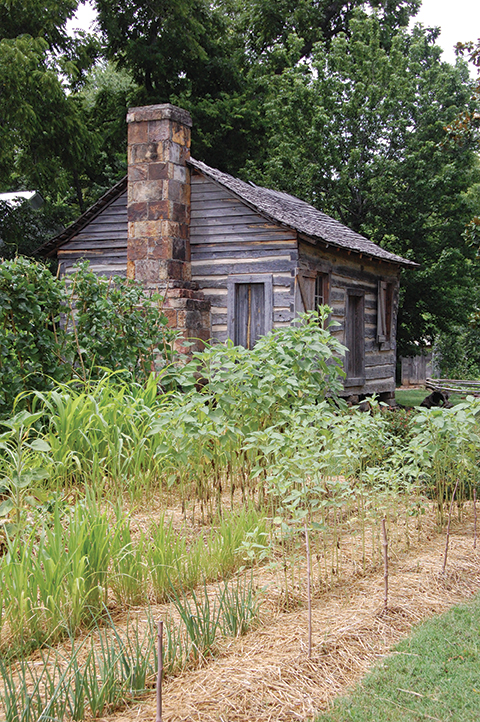 Springdale
Springdale
The Shiloh Museum of Ozark History is a regional history museum focusing on the Northwest Arkansas Ozarks. The museum takes its name from the pioneer community of Shiloh, which became Springdale in the 1870s.
The museum is located along the route traveled by the 1837 Cannon detachment and the 1839 Taylor detachment of Cherokees on the Trail of Tears. Nearby is Fitzgerald Farmstead, a registered site on the Trail of Tears National Historic Trail and also a stop on the Butterfield Overland Mail route. Museum exhibits include a small display on the Civil War in the Arkansas Ozarks.
The Shiloh Museum is located on the Razorback Regional Greenway, making it a great destination for bike riders.
 On March 10, 1862, four Confederate soldiers who had been deserted by their main company after the March 7 Battle of Pea Ridge were making their way home to the present-day Gentry and Siloam Springs areas. Knowing it was unsafe to travel during daylight, the soldiers, John Sager, Samuel Sager, Ned Lovel, and Haywood Pleasant Thomason, took cover in a bluff above Pipe Springs. Shortly, however, they were attacked by members of the Cherokee Home Guard, commonly known as “Pin” Indians. Of the four Confederates, only Samuel Sager managed to escape with his life. Sager made it to his father’s home near present-day Siloam Springs. After relating the sorrowful news, four young women, Lavinia Gunter, Ann Gunter, Mary Culbertson and Sarah Culbertson, hitched up a wagon and set out to retrieve the three Confederate dead, since travel for men was too dangerous. The women managed to load the soldiers into the wagon and brought them home for burial in Hico Cemetery in present day Siloam Springs.
On March 10, 1862, four Confederate soldiers who had been deserted by their main company after the March 7 Battle of Pea Ridge were making their way home to the present-day Gentry and Siloam Springs areas. Knowing it was unsafe to travel during daylight, the soldiers, John Sager, Samuel Sager, Ned Lovel, and Haywood Pleasant Thomason, took cover in a bluff above Pipe Springs. Shortly, however, they were attacked by members of the Cherokee Home Guard, commonly known as “Pin” Indians. Of the four Confederates, only Samuel Sager managed to escape with his life. Sager made it to his father’s home near present-day Siloam Springs. After relating the sorrowful news, four young women, Lavinia Gunter, Ann Gunter, Mary Culbertson and Sarah Culbertson, hitched up a wagon and set out to retrieve the three Confederate dead, since travel for men was too dangerous. The women managed to load the soldiers into the wagon and brought them home for burial in Hico Cemetery in present day Siloam Springs.
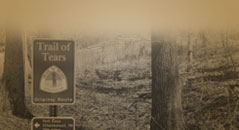

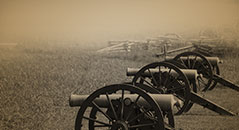

 Major General Thomas C. Hindman’s Confederate Army of the Trans-Mississippi attacked the Union Army of the Frontier under the command of Brigadier Generals James G. Blunt and Francis J. Herron on December 7, 1862. There were about 12,000 in the Southern Army from Arkansas, Missouri, Texas, as well as the Cherokee and Creek Nations. The Federal Army had about 10,000 soldiers from Arkansas, the Cherokee and Creek Nations, Illinois, Indiana, Iowa, Kansas, Missouri, and Wisconsin. The battle took place near the Illinois River on a ridge and valley called “Prairie Grove,” named after the small log church which sat upon the high ground.
Major General Thomas C. Hindman’s Confederate Army of the Trans-Mississippi attacked the Union Army of the Frontier under the command of Brigadier Generals James G. Blunt and Francis J. Herron on December 7, 1862. There were about 12,000 in the Southern Army from Arkansas, Missouri, Texas, as well as the Cherokee and Creek Nations. The Federal Army had about 10,000 soldiers from Arkansas, the Cherokee and Creek Nations, Illinois, Indiana, Iowa, Kansas, Missouri, and Wisconsin. The battle took place near the Illinois River on a ridge and valley called “Prairie Grove,” named after the small log church which sat upon the high ground.